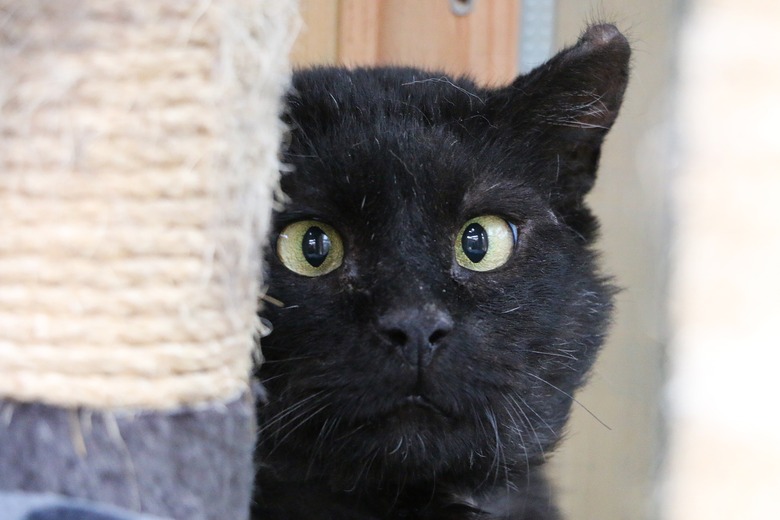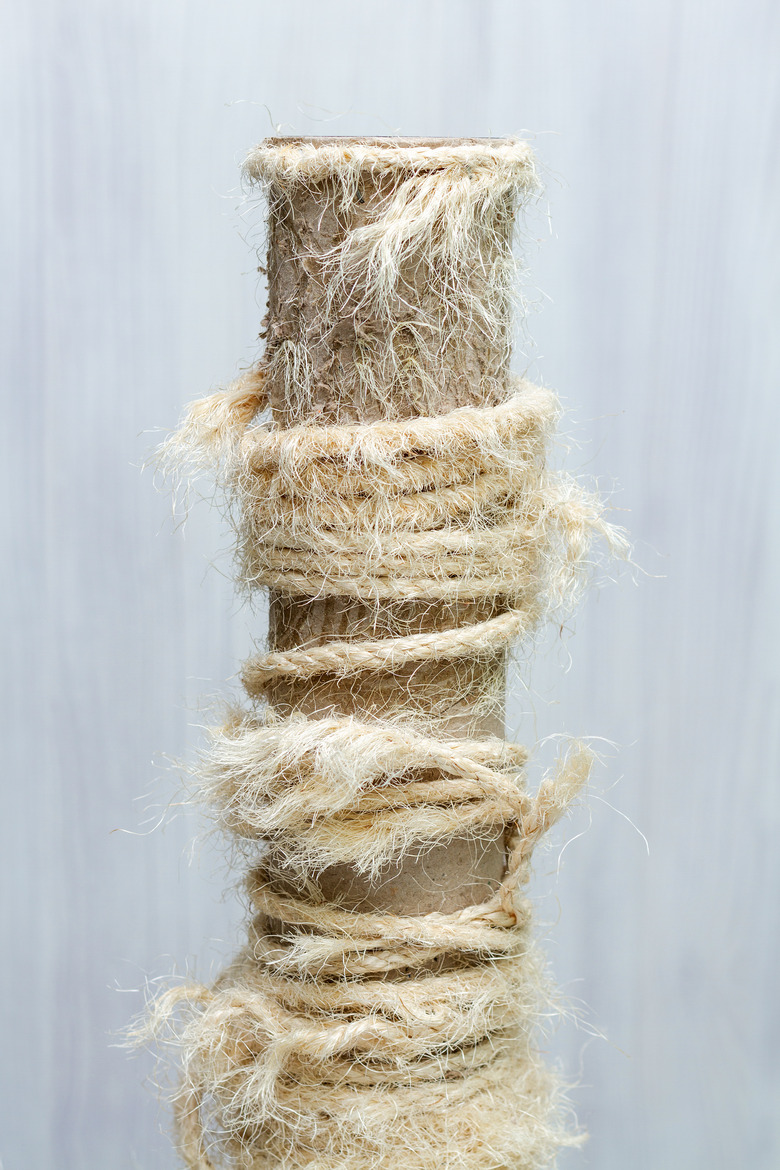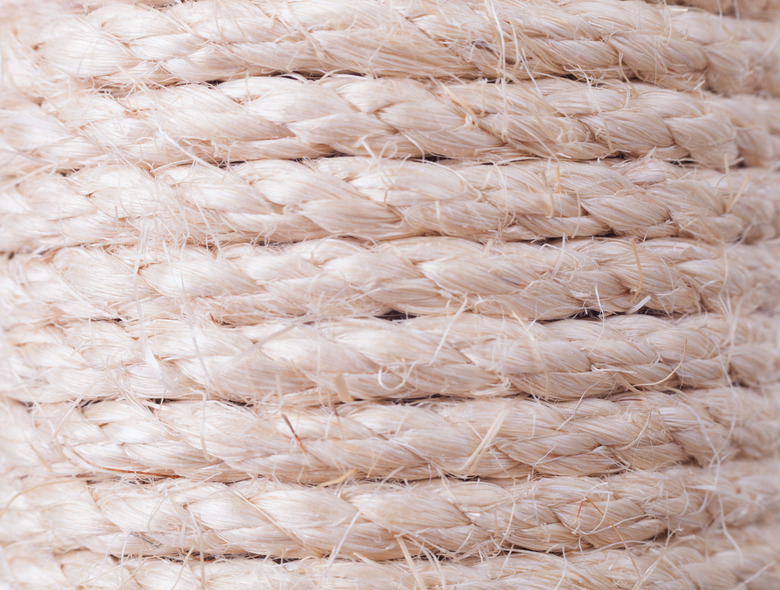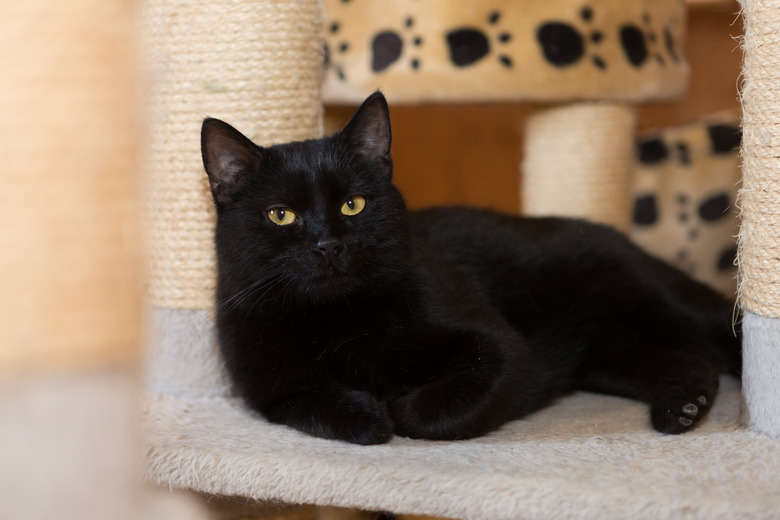How To Replace The Sisal Rope On A Cat Tree
We may receive a commission on purchases made from links.
Cuteness may earn compensation through affiliate links in this article.
Scratching is an essential and healthy part of a cat's life. Giving your cat plenty of scratching toys and posts is the best way to protect your furnishings from kitty claws. But even durable sisal rope can become tattered after heavy use. Here's the best way to replace it and bring new life to your cat's tree.
Calculate the rope length
Calculate the rope length
Although you might be able to remove and measure the exact amount of rope that was originally used on your cat tree, chances are that if you're replacing it, it's already in tatters. There's an easier way.
Use a sewing measuring tape to determine the circumference of the post where you'll be replacing the sisal rope. If you don't have a sewing measuring tape, wrap a piece of string around it and then measure the length of string it took to encircle the post with a yardstick or handyman's tape measure.
Take your tape measure over to the cat tree or cat scratching post. Measure the height of the pole in inches that you'll be wrapping. Enter this and the circumference in the What Kitty Wants Sisal Rope Calculator. Finally, choose whether you want 1/4" (6 mm) or 3/8" (10 mm) sisal rope from the drop-down menu on the calculator.
These sizes are most common on store-bought cat trees. The quarter-inch is thinner and easier to work with, but the 3/8" stands up to cat claws longer. You'll also need less yardage of 3/8" as it is wider.
When cutting the rope, wrap the end back on itself about an inch and secure it with a rubber band. This prevents the rope from unraveling when you're working with it.
Remove the old rope
Remove the old rope
Take the cat tree outside for this part of the project, as tattered sisal rope can be dusty and release collected dander during this process. The tree should rest on a surface you can easily sweep up. Otherwise, place some sheets of newspaper, a tarp, or an old sheet below to protect the surface.
Don some old clothes you don't mind getting dusty; a mask to cover your mouth and nose, safety glasses and gloves are also good to wear to prevent small bits of rope or dirt from getting inhaled or lodged in skin or eyes.
Once you're ready to begin, find the part of the rope that's most heavily damaged and cut it apart with a carpet knife or sharp scissors. If you've cut through many damaged strands, the rope can be easily removed in pieces.
Check to see what material the post is made from. If it is cardboard, you'll need a lighter touch during rope removal and rewinding than you would with a more durable material like wood.
Work from top to bottom unwinding any uncut rope. This will keep most of the sisal mess together and your pole as dust-free as possible. If the rope was glued to the post, you might have to pull hard. This is when you'll encounter the most dust and bits of flying sisal.
Remove the securing staple at the top and bottom of the sisal rope where the ends are fastened to the pole using a staple remover or pair of needle-nose pliers. You might need to gently pry up the staple with a flat-blade screwdriver; be careful to do as little damage as possible to a cardboard post. Completely remove all staples — they are sharp! —and dispose of them appropriately.
Discard the old rope in a plastic garbage bag and tie it shut. Use a microfiber cloth to remove dust from the post.
Attach new rope
Attach new rope
It's easiest to replace the rope with sisal that is the same color and size as the original rope. However, you can refresh the look of your cat tree by ordering Sisal Rope for Cat Scratcher Repair in black or dyeing light natural rope using pet-safe dye. Re-energize a multi-level cat tree using colors from a RIT Liquid Fabric Dye Kit Bundle or mix your own using RIT's Color Formula Chart to closely match the hues of your home decor.
Whichever direction you want to go, make sure to use oil-free sisal rope. Oiled rope contains resins that can be harmful to your pet.
Begin by securing the bottom end as close to the base as possible with two or three half-inch roofing nails if the post is made of wood, suggests Cats International. If the post is cardboard and you can remove the base platform's bolt, insert a piece of wood that you can nail into. Otherwise, nail the beginning end of the rope to the base itself as close to the pole as possible.
Once you've secured the rope to the base, wrap it as tightly as possible around the pole. Use a rubber mallet to tap each level of cordage tightly against the next. The tighter your wrap, the better it will endure your cat's tugging claws.
When you've wrapped the entire length of rope, secure it to the top end of the scratching pole in the same fashion.
Don't use glue unless absolutely necessary. Hot glue won't stand up to a cat's strong claws any will result in puckered rope, gaps, and bits of dried glue in your carpet. Cats are turned off by the scent of glues and fixatives, and many emit toxic fumes.
Grab her attention
Grab her attention
Once you've re-wrapped the post, you might marvel at your masterpiece while your cat walks away indifferently. Pique her interest by spritzing the new rope areas with catnip spray such as Pet Craft Supply Premium Potent Catnip.




